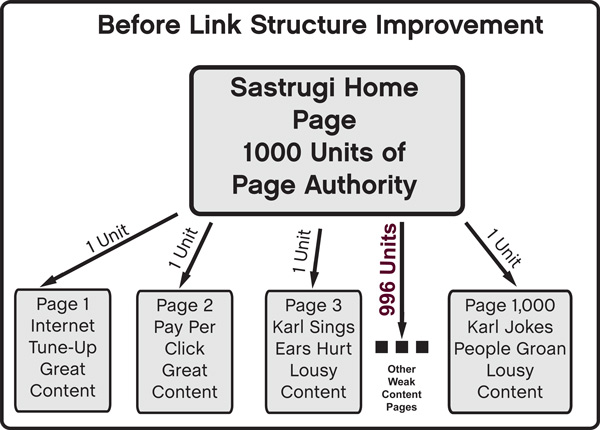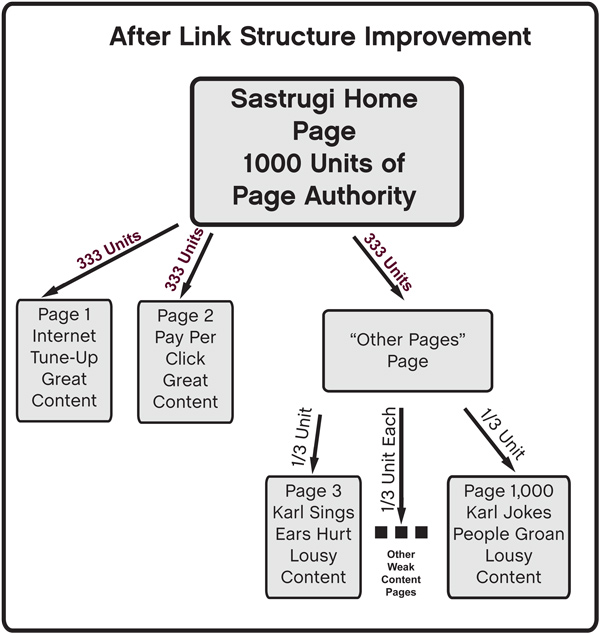Internal Link Structure
Links and Link Structure
Create a link to every content page! Content doesn't help if Googlebot and People can't find it. XML and HTML Site Maps can help. Long tail search terms could identically match subpages content, and you'll gain traffic from every page that's indexed.
Internal Links should be organized to drive Page Rank and traffic to keyword rich pages generating revenue. For example, a take-our or delivery restaurant's menu page (the page "closing the sale") should have an inbound link from all website pages, and multiple links from several pages. For important pages, make the Anchor Text large, and near the top of the page.
Your Home Page "Link Power" is valuable: Distribute it to subpages based on importance (and user experience).
Links to revenue trivial pages (copyright, disclaimers, warranty details, etc.) should be placed lower on the page, and the Anchor Text should be in smaller font.
Anchor Text
Anchor Text is linked text on the linking page, not the target page. This sentence uses Search Engine Optimization as Anchor Text and http://www.sastrugimarketing.com/seo as the target page. Target pages will rank higher for search terms containing the Anchor Text.
Assume Sastrugi Marketing has two web pages promoting important products: The Internet Upgrade and Pay Per Click management. Both pages have great content and convert visitors to paying customers. However, the site also includes 998 pages of valueless Karl's artistic endeavors. Assume a Home Page with 1000 Units of Page Authority, distributed to 1,000 subpages in a very long list of Home Page links:

The 1,000 subpages in this link structure generate poor search results (assuming no external links to subpages). They lack the authority to beat competitors.
Link structure revision could improve results by creating only three links from the Home Page: Two to the important pages, and one to an "Other Pages" page, with links to the 998 economically trivial pages.
The resulting structure looks like:

The Page Authority of "good" subpages increases by 33,333%!!!
Links in prominent positions (higher on the page, in the central content of the page, larger text) receive more Page Authority.
This structure creates a "positive feedback effect" if employed on every page - the subpages "reflect" more Page Authority back to the Home Page.
This logic can also be applied to multiple websites owned by the same entity: Use link structure to boost pages likely to "win" in search results, and likely to result in conversions.